In 2017, the Venice Biennale, one of the most prestigious art exhibitions in the world, featured a breathtaking sculpture that captured global attention. Created by renowned sculptor Lorenzo Quinn, the artwork, titled “Support,” was both monumental in scale and profound in its message. This installation, with its giant hands rising from the Grand Canal to cradle the historic Ca’ Sagredo Hotel, stands as a powerful commentary on humanity’s role in both the preservation and destruction of our planet.
Lorenzo Quinn’s Vision: A Sculpture to Save Venice
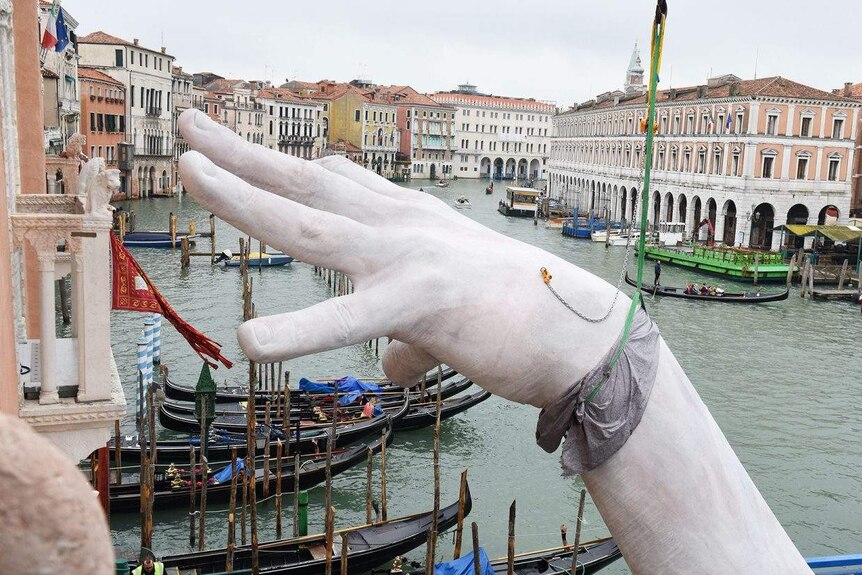
Lorenzo Quinn’s “Support” is more than just a visually stunning piece of art; it is a statement about the precarious balance that Venice, and indeed the world, faces in the wake of climate change. The sculpture features two massive hands that appear to rise from the water, seemingly holding up the building that houses the Ca’ Sagredo Hotel. Quinn’s intention was to symbolize the dual capacity of human beings—to either destroy the world or to save it. The hands represent both the power to protect and the power to harm, a poignant reminder of the responsibility humanity holds.
Venice and the Threat of Global Warming
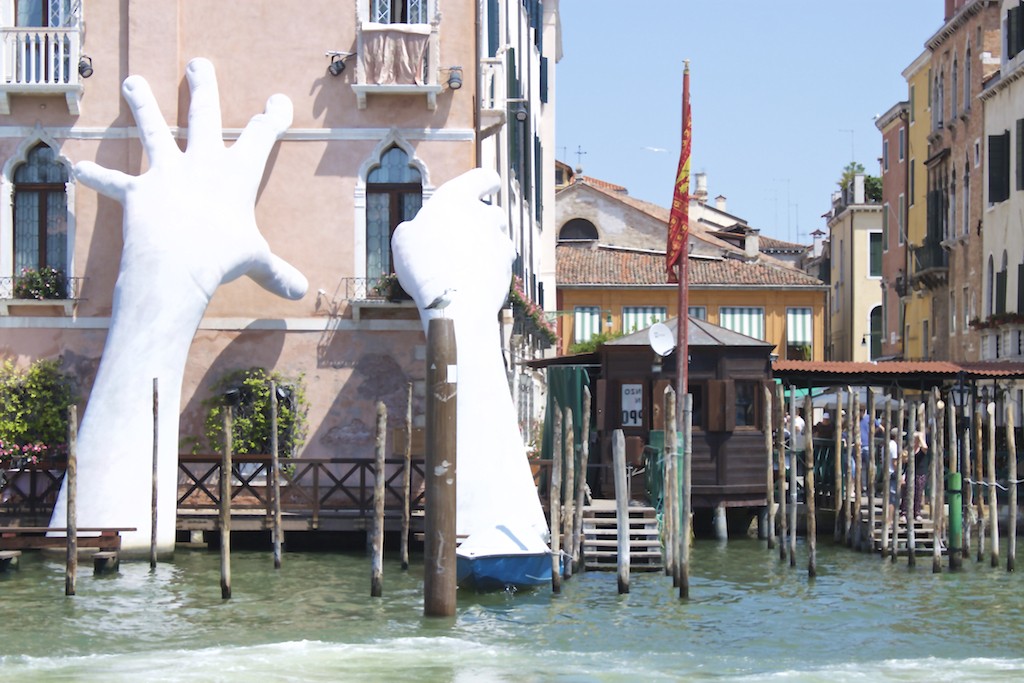
Venice, often described as the “Floating City,” is uniquely vulnerable to the impacts of global warming. Rising sea levels threaten to submerge the city, erasing centuries of history and culture. Quinn’s “Support” was unveiled during the 57th International Art Exhibition at the Venice Biennale, drawing attention to this looming disaster. The artwork encapsulates the delicate relationship between Venice and the waters that surround it, serving as a visual plea for immediate action to combat climate change.
Crafting the Sculpture: A Blend of Art and Technique
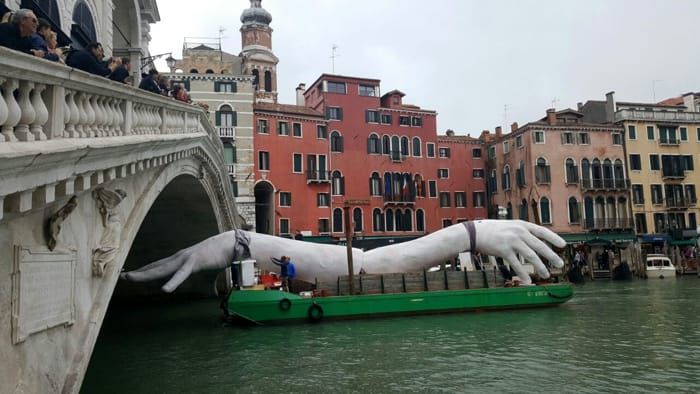
The creation of “Support” was a monumental task in itself, requiring both artistic vision and technical expertise. Quinn collaborated with the Halcyon Gallery in London and used the ancient lost-wax casting method to bring his vision to life. This technique, which has been used for centuries, involves creating a mold from a wax model of the design. Quinn’s studio in Barcelona was the birthplace of these colossal hands, which were later transported to Venice and installed in the Grand Canal.
A Personal Message from the Artist
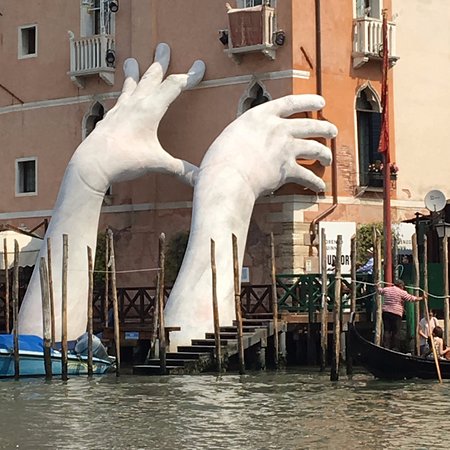
While “Support” carries a universal message of hope and urgency, it also holds personal significance for Quinn. As a father of three, he is deeply concerned about the world that future generations will inherit. In a social media post, Quinn expressed his desire to leave a better world for his children, using the innocent, yet powerful image of the hands to convey that collective action can curb the threat of climate change. The sculpture, in its stark simplicity, calls for unity and determination in the face of global challenges.
The Legacy of Hand Sculptures in Art
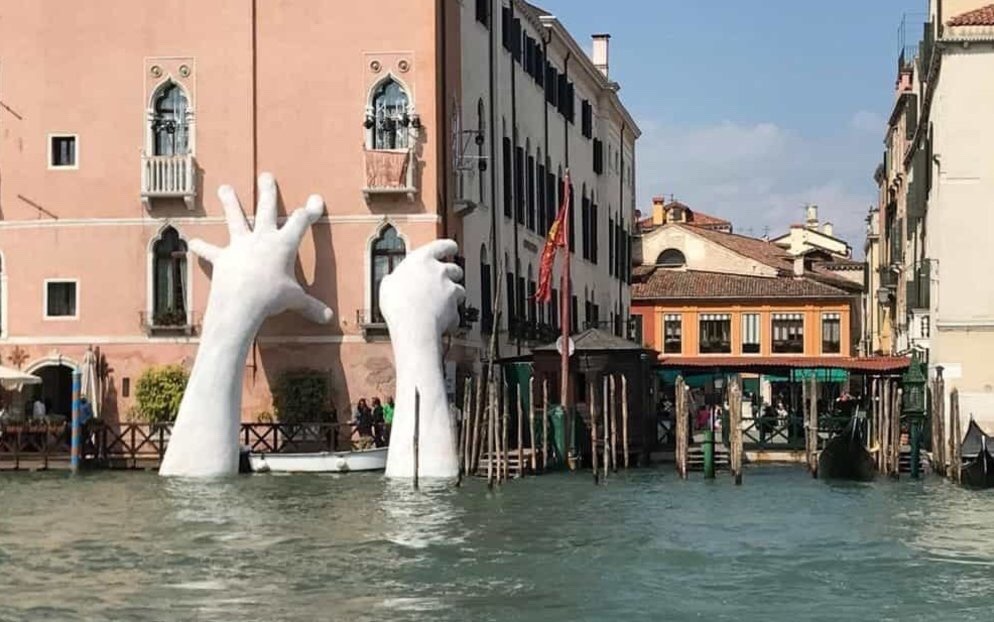
Lorenzo Quinn is not the only artist to use hands as a central theme in his work. Throughout his career, Quinn has often employed the imagery of hands to communicate powerful messages. Other notable works include “The Tree of Life,” a bronze sculpture in Birmingham, England, dedicated to the victims of World War II, and “Love,” a sculpture featuring clasped hands set in a ring in Millbank, London.
Quinn’s use of hands connects him to a broader tradition of hand sculptures in art. Chilean sculptor Mario Irarrázabal, for instance, has created several large-scale hand sculptures since the 1980s, including the famous “Hand of the Desert” in Chile’s Atacama Desert. These works, like Quinn’s, evoke deep emotional responses and have become iconic landmarks in their respective locations.
Conclusion
Lorenzo Quinn’s “Support” is more than just a remarkable piece of public art; it is a powerful symbol of the choices facing humanity. The sculpture’s massive hands, rising from the waters of Venice, remind us of our collective responsibility to protect the world for future generations. As climate change continues to threaten cities like Venice, “Support” stands as both a warning and a call to action, urging us to use our power wisely to save the planet. Through this work and others like it, Quinn and artists around the world continue to inspire and challenge us to confront the critical issues of our time.
